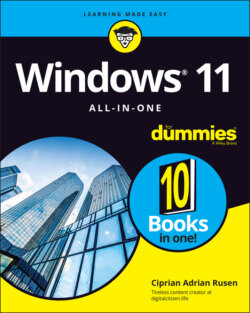Читать книгу Windows 11 All-in-One For Dummies - Ciprian Adrian Rusen - Страница 53
64-bit is the new normal
ОглавлениеIf you’ve settled on Windows 11 as your operating system of choice, there’s no more stressing about whether you want the 32-bit flavor or the 64-bit flavor of the Home edition, as was the case with Windows 7 and Windows 10. That’s because Windows 11 is the first consumer operating system from Microsoft to support only 64-bit processors. It doesn’t work on older 32-bit processors, and it accepts only modern hardware that meets its strict security requirements.
Not being able to use Windows 11 on old hardware can be annoying, but there are important benefits to this enforcement on Microsoft’s part:
Performance: The 32-bit flavor of Windows — the flavor that everyone was using more than a decade ago — has a limit on the amount of memory that it can use. Give or take a nip here and a tuck there, 32-bit machines can see, at most, 3.4 or 3.5 gigabytes (GB) of memory. You can stick 4GB of memory into your computer, but in the 32-bit world, anything beyond 3.5GB is simply out of reach. With many desktop apps acting like resource hogs, such as the Google Chrome browser, you want 4GB or more on any PC.
Security: Security is one more good reason for running a 64-bit flavor of Windows. Microsoft enforced strict security constraints on drivers that support hardware in 64-bit machines — constraints that just couldn’t be enforced in the older, laxer 32-bit environment.
There’s only one problem with 64-bit Windows: drivers. Some people have older hardware that doesn’t work in any 64-bit flavor of Windows. Their hardware isn’t supported if the manufacturer decides that it isn’t worth the money to build a solid 64-bit savvy driver so that the old hardware can work with the new operating system. You, as a customer, get the short end of the stick and are forced to buy new hardware.
Applications, however, are a different story. All 32-bit apps work on 64-bit Windows and shouldn’t be an issue.
